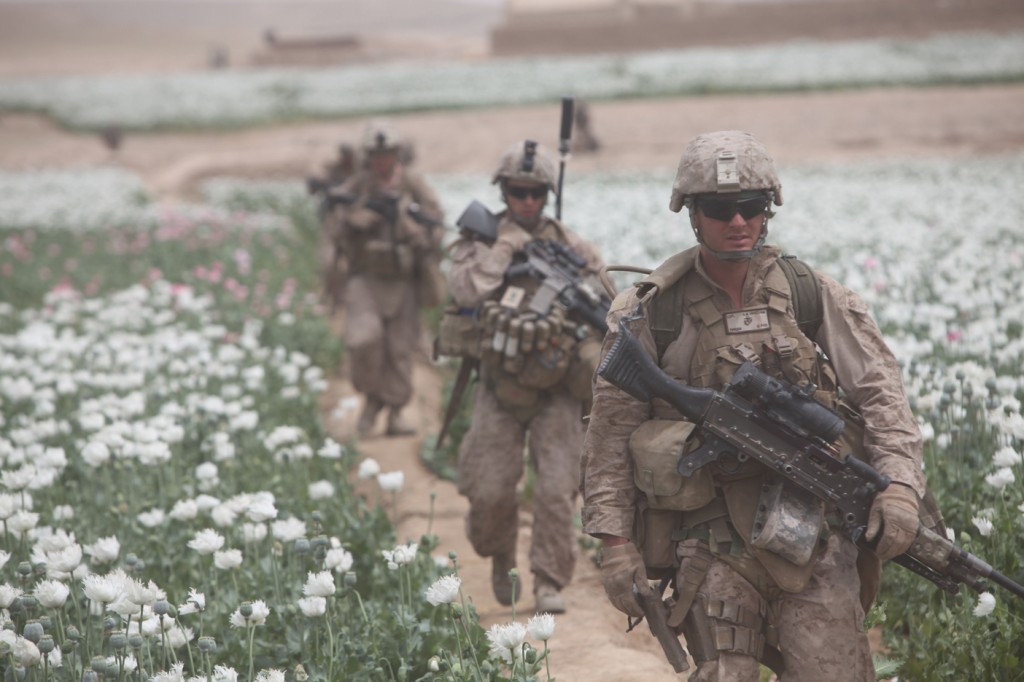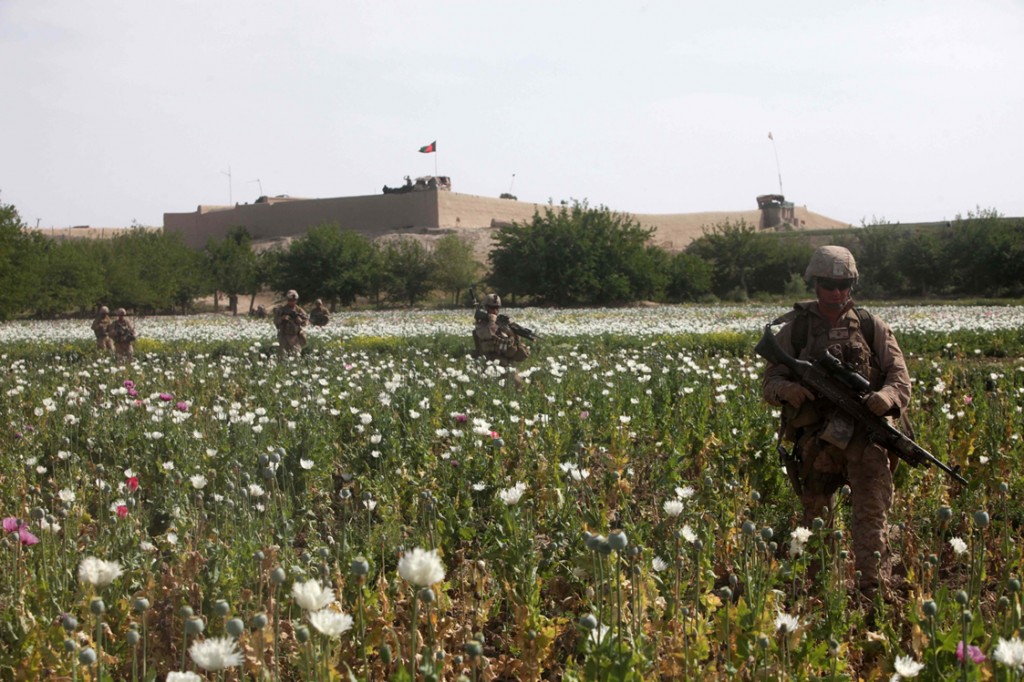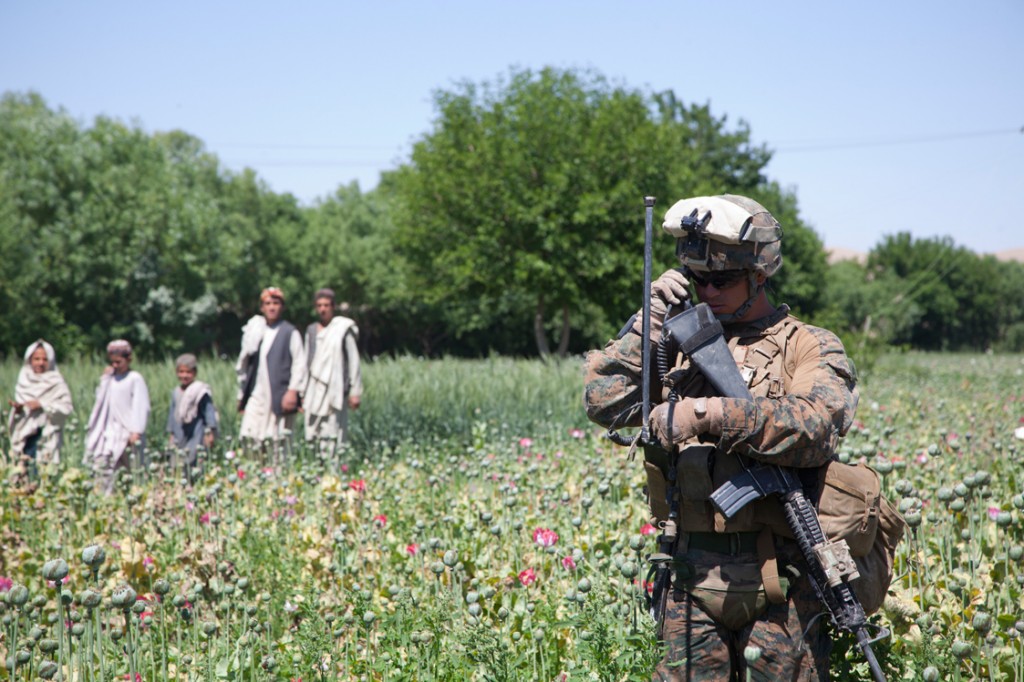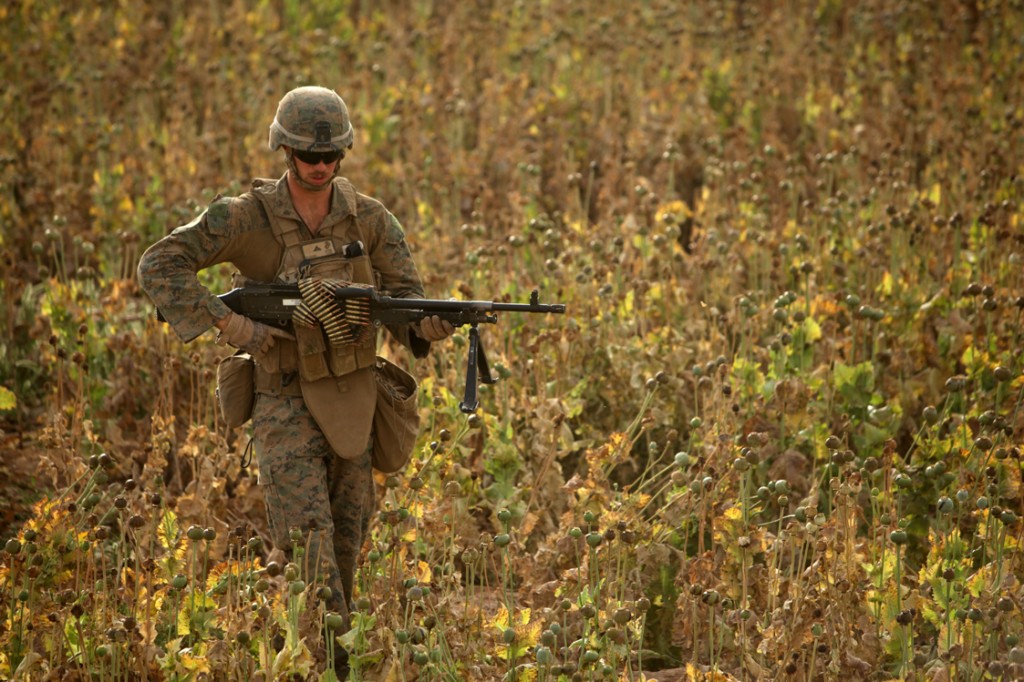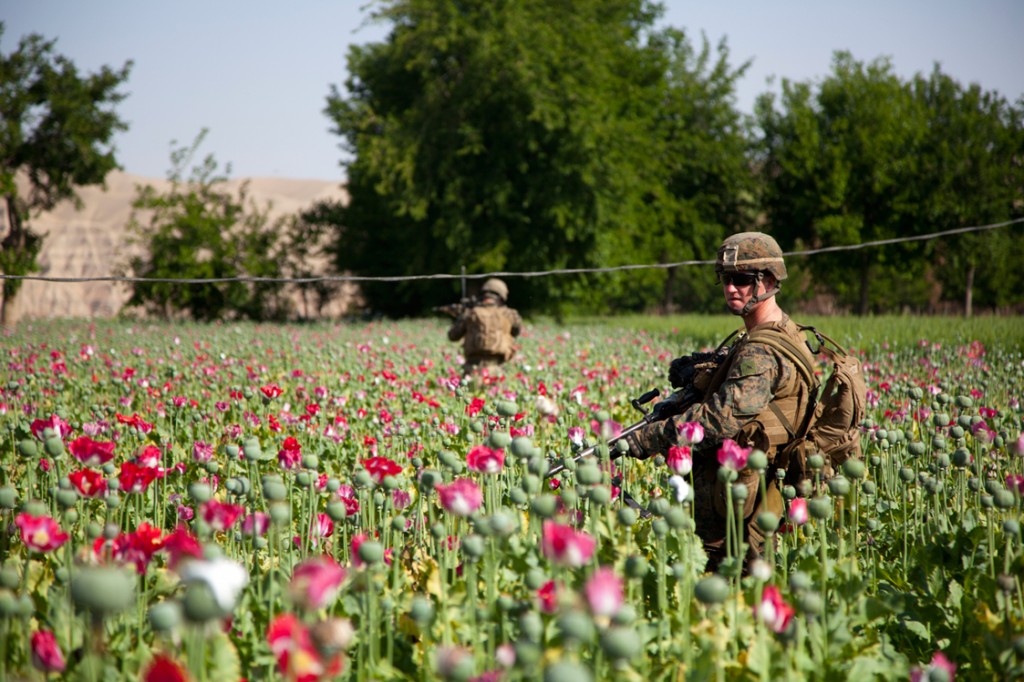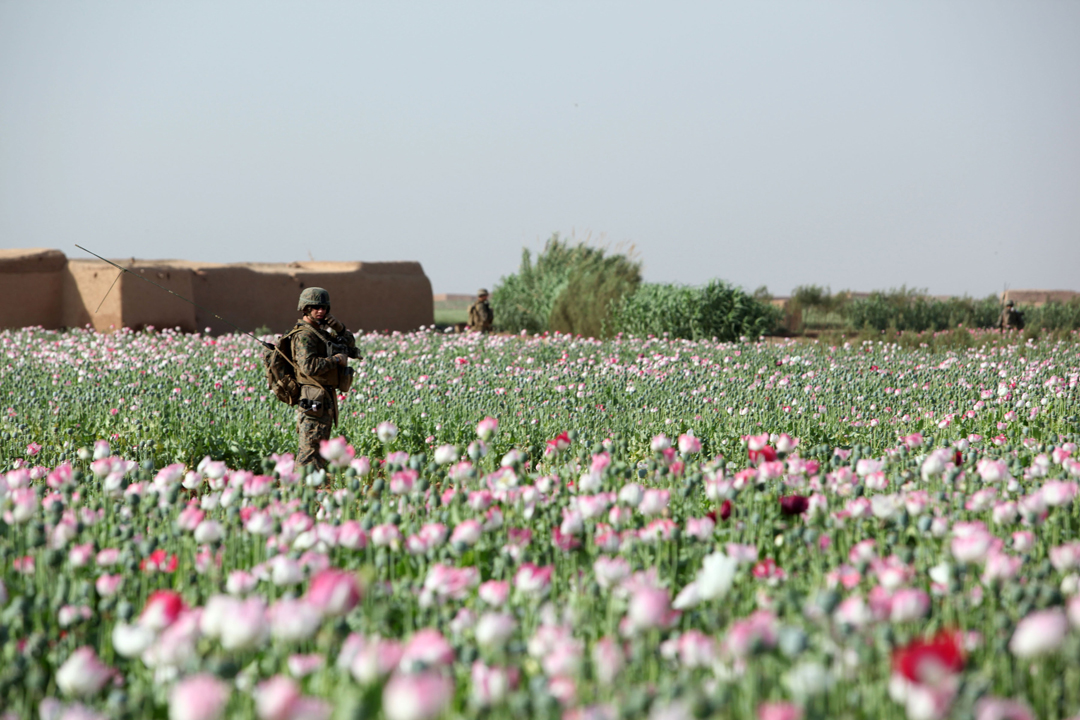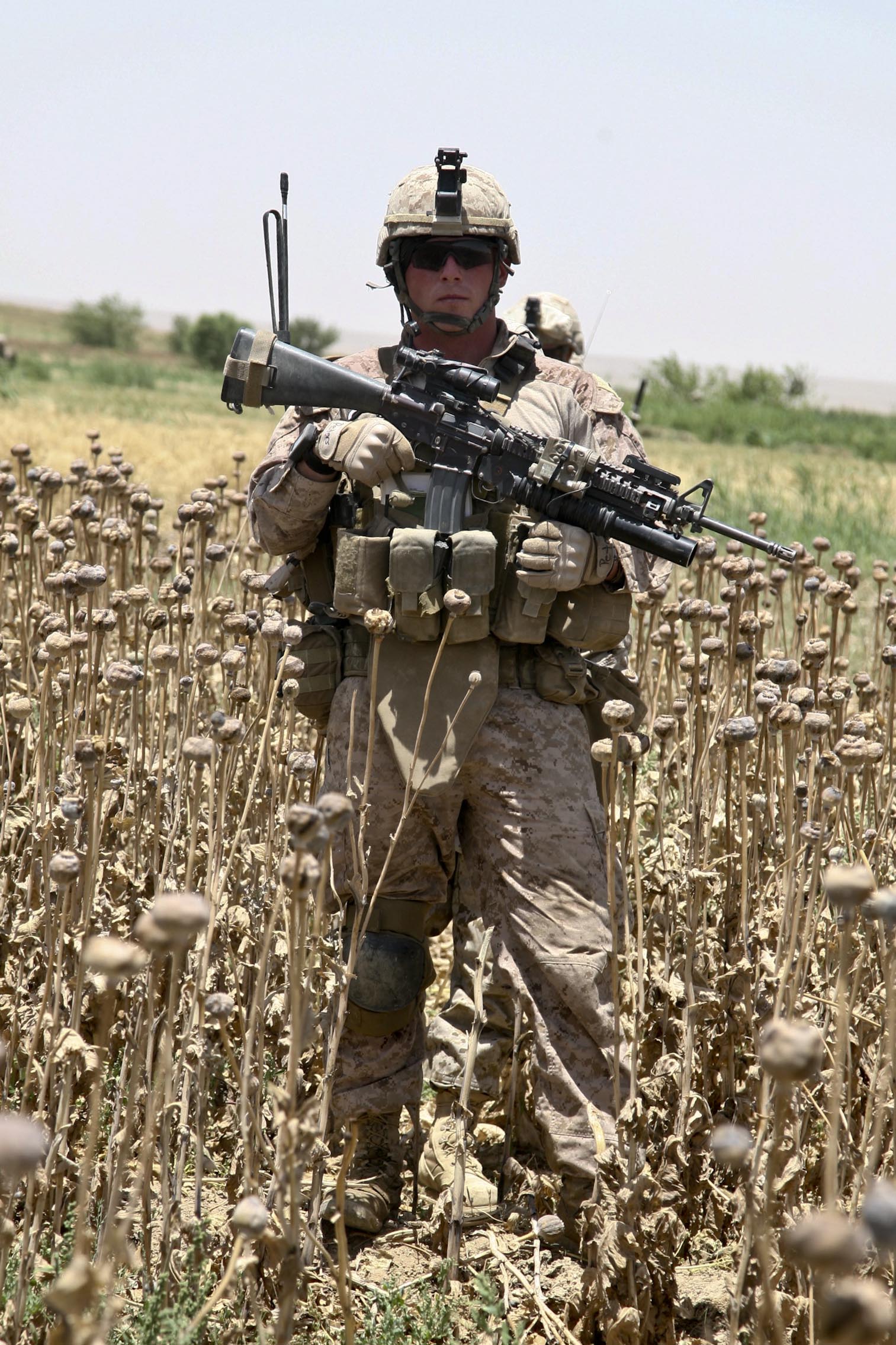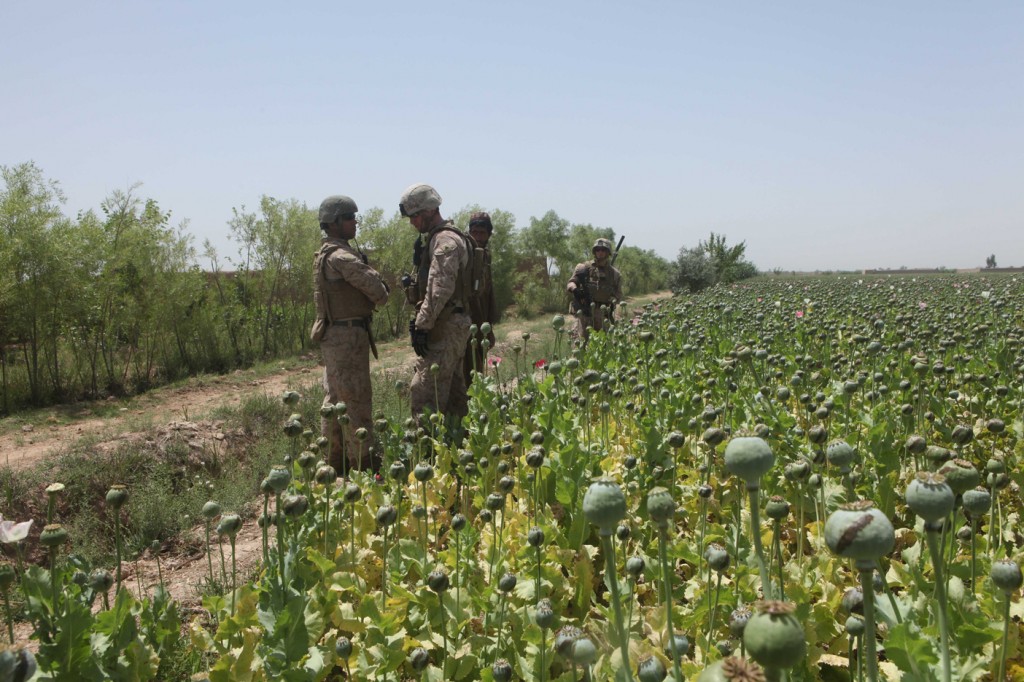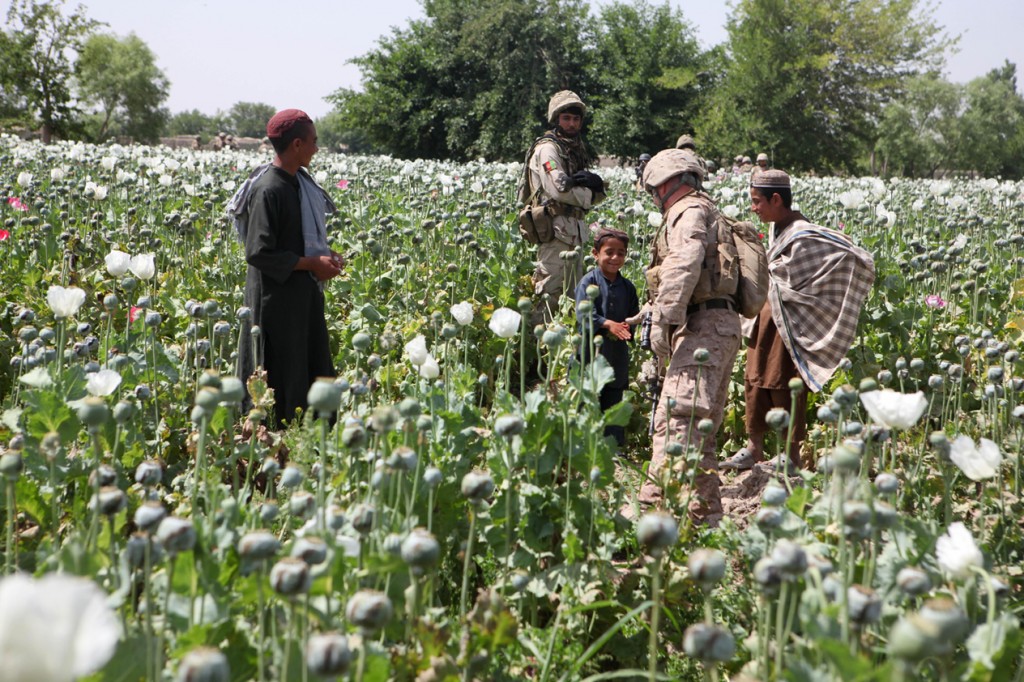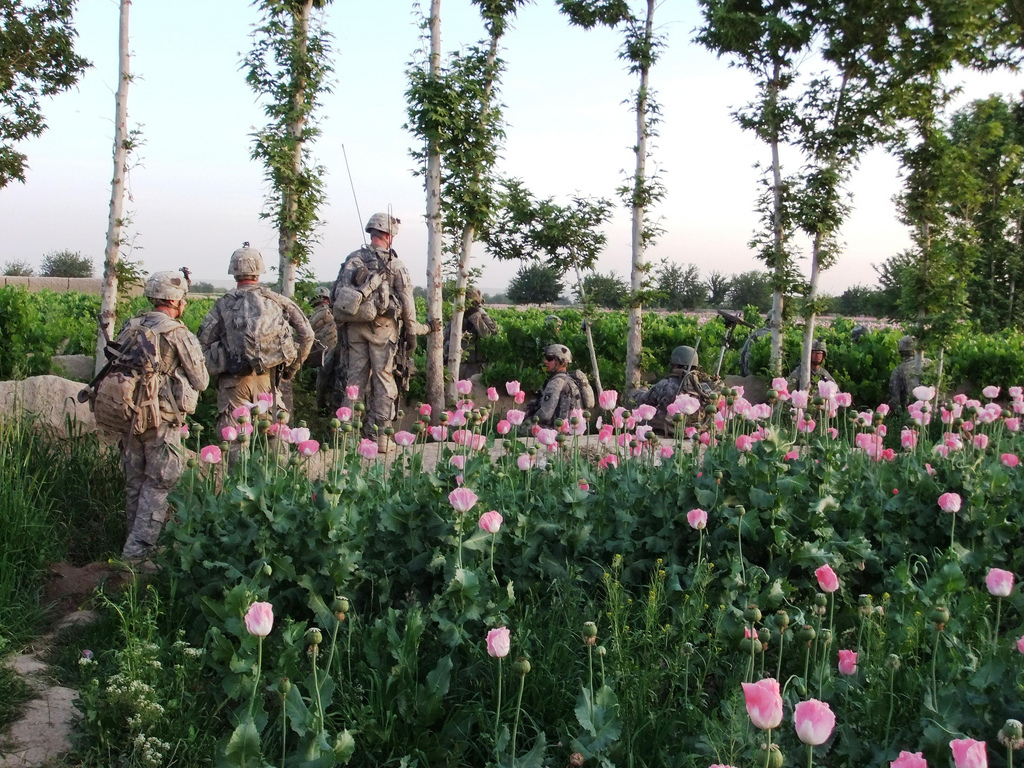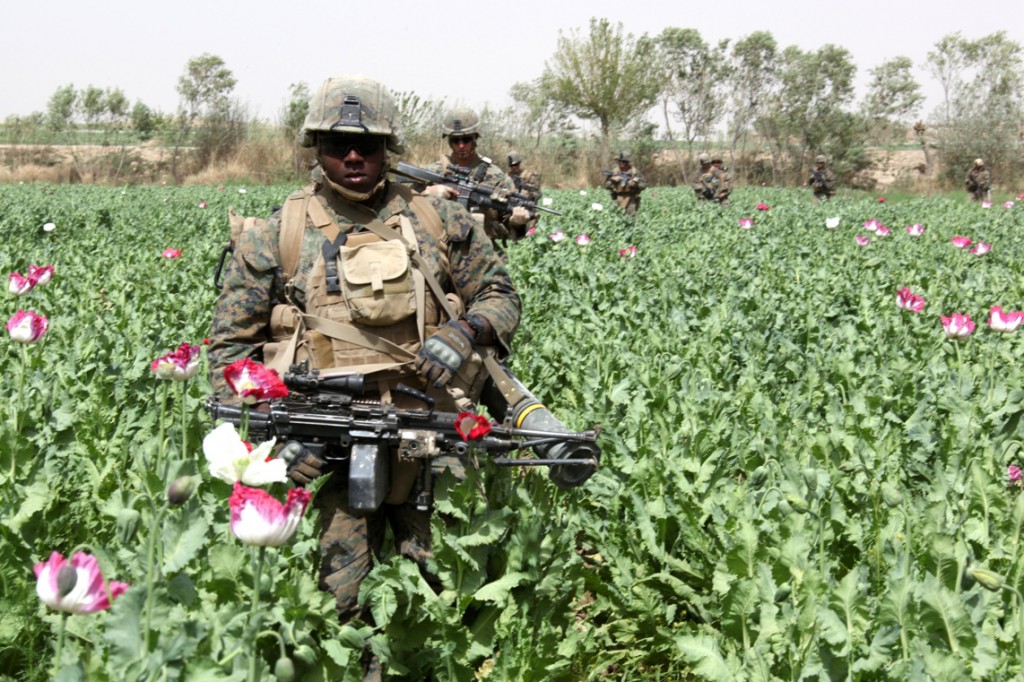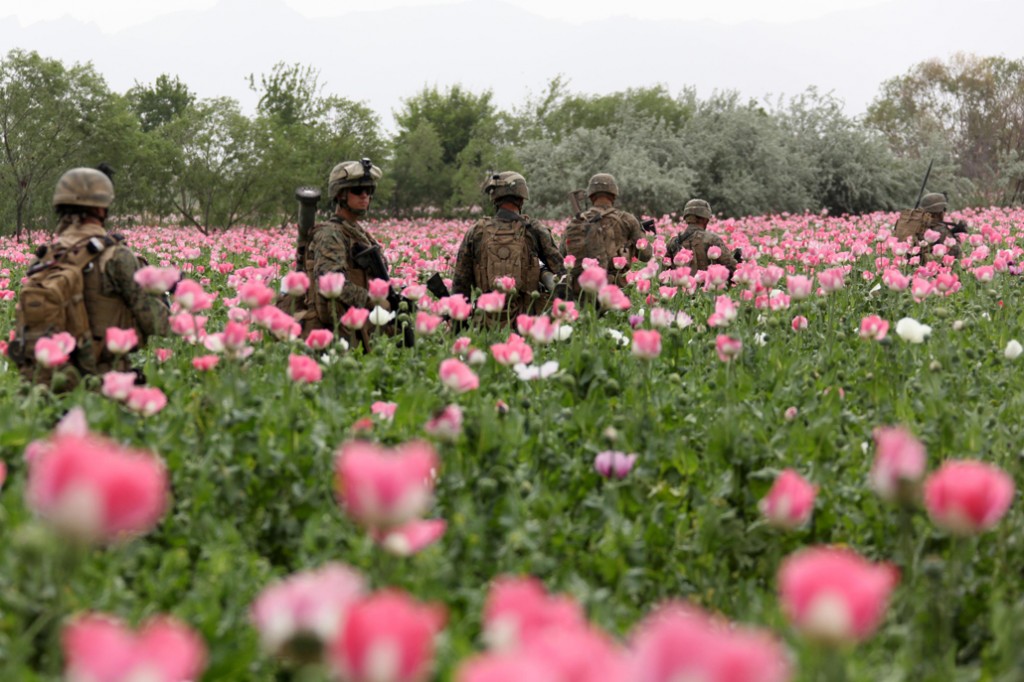Grenade Attack 2004: Then PM didn't let DGFI launch probe
Ex-DGFI boss Rumi says Khaleda asked him not to proceed, Hannan told
intelligence men about involvement of Tarique, Babar
Khaleda Zia as prime minister did not allow the Directorate General of
Forces Intelligence chief to investigate the August 21 grenade
assaults in 2004.Maj Gen (retd) Sadik Hasan Rumi, the then DGFI
director general, said this before a Dhaka court yesterday during his
deposition as the 65th prosecution witness of the cases filed in
connection with the attacks.
Judge Shahed Nuruddin of Speedy Trial Tribunal-1 recorded Rumi's
nearly one-and-a-half hour statement and fixed November 11 for
cross-examination by defence counsels.
Although the then opposition leader Sheikh Hasina, now prime minister,
narrowly escaped death and suffered ear injury in the grenade blasts,
24 other AL activists, including Ivy Rahman, wife of President Zillur
Rahman, were killed and around 300 maimed.
Rumi in his statement said that at about 5:30pm to 5:45pm on August
21, 2004, Col Imam informed him about the attacks over the mobile
phone.Rumi could reach neither Khaleda nor her ADC as she was at a
public rally in Noakhali on the day.
He over phone requested the prime minister's political secretary,
Harris Chowdhury, who was then with Khaleda, to inform her about the
attack."Without expressing any reaction regarding the attack, Harris
Chowdhury told me that he would pass the information on to the prime
minister," Rumi told the court, adding that Harris hung up before he
could go into details.
"I contacted state minister for home Lutfozzaman Babar over mobile
phone. He replied he was in his office and had heard about the
incident. He then cut the phone line."Later, I directed CIB director
Brigadier Gen Rezzakul Haider and Col Imam to inform me about the
incidents in detail. I also directed them to collect video footage and
show it to me," said the former DGFI DG.
"The next morning, Rezzakul informed me that on that night of the
incidents, Babar had directed him to destroy two unexploded grenades
by army experts. Under that instruction, Rezzakul that night sent army
personnel to the place of occurrence. The army men took away two
unexploded grenades."
The next day, August 22, 2004, around 2:00pm, the DGFI DG met Khaleda
Zia at her office and sought her permission to conduct an
investigation."She [Khaleda] told me that a committee would be formed
to enquire into the matter, and that I needn't investigate."
Later, a meeting was held at the home ministry about this incident and
there Rezzakul Haider Chowdhury represented the DGFI.The former DGFI
DG said he learnt from Rezzakul that the government-appointed
investigation committee could unearth nothing.
In August 2006, information extracted from Shahedul Alam Bipul, a Huji
operative, led Task Force Intelligence (TFI) to interrogate Mufti
Abdul Hannan, detained leader of the militant group Harkat-ul-Jihad-al
Islami (Huji).Hannan told the TFI cell about the involvement of his
organisation as well as Tarique Rahman, BNP ministers Babar and Abdus
Slam Pintu in the attacks, Rumi said.
The statements of two other Huji men, including Pintu's brother
Moulana Tajuddin, also corroborated Hannan's version.
Rumi said the DGFI came to know that grenades had been supplied by
Tajuddin, who was sent abroad by some of his colleagues in DGFI as per
the then BNP government's decision.
A DGFI representative to the TFI cell informed Brig Gen Amin and Lt
Col Saiful Islam Joarder about Hannan's statement on the August 21
attack.
Since Mufti Hannan had mentioned the names of two ministers in his
statement, the DGFI boss made it known to the prime minister in
writing as well as verbally. "She [Khaleda] did not give me any other
directive in this regard later."
Meantime, the Rab DG called him, seeking DGFI help to capture Moulana
Tajuddin. Rumi asked Lt Col Saiful Islam Joarder to help the elite
crime buster get Tajuddin.Saiful told the DGFI boss that there would
be a problem if they handed over Tajuddin to Rab. "When I asked what
the problem was, he [Saiful] said the government was likely to be put
in an embarrassing situation."
A few days after this conversation, Rumi learnt from his colleague Big
Gen Amin that Tajuddin, located through Huji founder Moulana Salam,
was at a DGFI safe house in Gulshan.
Rumi directed Amin and Saiful to obtain every bit of information from
Tajuddin. Sometime in October 2006, both officers informed the DG
chief that Tajuddin's statement matched everything Hannan had
revealed.
Afterwards, Brig Gen Amin and Lt Col Saiful informed Babar and the
PM's private secretary-2 (also her nephew) Saiful Islam Duke about
Moulana Tajuddin's statement.
Later the two DGFI officers informed their DG that Babar and Duke had
told them about the prime minister's directive on sending Moulana
Tajuddin abroad. Tajuddin wanted to go to Pakistan.
"Then I asked them why they had informed me about Tajuddin's wish to
go to Pakistan even though they had made all arrangements," Rumi
said.Duke is a nephew of the then prime minister while Saiful is
Duke's brother-in-law.
As many DGFI reports were leaked out because of Amin's intimacy with
the duo, it was impossible to maintain secrecy about the agency's
work. "I appealed to the authorities concerned to transfer them. But
it was not done," said Rumi.
http://www.thedailystar.net/newDesign/news-details.php?nid=256386
------------------------------------
[* Moderator's Note - CHOTTALA is a non-profit, non-religious, non-political and non-discriminatory organization.
* Disclaimer: Any posting to the CHOTTALA are the opinion of the author. Authors of the messages to the CHOTTALA are responsible for the accuracy of their information and the conformance of their material with applicable copyright and other laws. Many people will read your post, and it will be archived for a very long time. The act of posting to the CHOTTALA indicates the subscriber's agreement to accept the adjudications of the moderator]
Yahoo! Groups Links
<*> To visit your group on the web, go to:
http://groups.yahoo.com/group/chottala/
<*> Your email settings:
Individual Email | Traditional
<*> To change settings online go to:
http://groups.yahoo.com/group/chottala/join
(Yahoo! ID required)
<*> To change settings via email:
chottala-digest@yahoogroups.com
chottala-fullfeatured@yahoogroups.com
<*> To unsubscribe from this group, send an email to:
chottala-unsubscribe@yahoogroups.com
<*> Your use of Yahoo! Groups is subject to:
http://docs.yahoo.com/info/terms/
Monday, November 5, 2012
[chottala.com] India's economic invasion of Sri Lanka
India's economic invasion of Sri Lanka
.
By Shenali Waduge, Eurasia Review
Half of Sri Lanka's post-independence was ravaged with countering
terrorism. Sri Lanka's sovereignty and territorial integrity was
secured by its armed forces but not without sacrificing life and limb.
The armed forces passed on the next phase of post-conflict to Sri
Lanka's political leadership. Nevertheless, it is more than clear that
from the manner economic development is defined and approached we are
watching India economically take over Sri Lanka on a silver platter.
Would it not be a shame and an insult to Sri Lanka's security forces
to negate all that they fought to win when in time all that Sri Lanka
took pride in ends up owned and belonging to India?
It is not that Sri Lanka's leadership has not been warned. Countless
times many have raised the importance of securing Sri Lanka natural
resources and strategically important focal points. Enough of times
warnings have been given to look beyond the gifts given. Strategic and
natural resources should gain no place in diplomatic or trade
discussions where it would mean that they end up a security risk to
Sri Lanka.
In reference to India, whatever ancient ties is being used to promote
cordial relations - we should not be gullible to realities. India
helped train, support and finance Tamil militant movements, India used
every diplomatic opportunity to humiliate Sri Lanka and what more
excuses can India give for its ultimate betrayal in Geneva. Our
relationships with India must always have at the back of our mind what
India is still capable of doing to Sri Lanka because India took the
option of undercutting Sri Lanka instead of developing better ties
with Sri Lanka. Sri Lanka cannot be naïve to this fact especially when
India ignores the fact that Sri Lanka did India a favor by eliminating
the LTTE and reducing the Eelam homeland calls which is eventually
targeted at breaking up India's south. Yet, India has allowed Tamil
Nadu leaders to go and deliver its TESO Resolutions to the UN.
It is apparent that India thinks itself too big and too powerful to be
thanking Sri Lanka so its next best alternative in case Tamil Nadu
separatism does go beyond India's control is to ensure that Sri Lanka
is very much under its periphery of control - to ensure that India
needs to interlock Sri Lanka to various trade and service agreements
which Sri Lanka appears to be blindly agreeing to - blindly because it
is under the foreign radar to show FDIs and development to the rest of
the world and India has managed to ensure other nations are kept aloof
while it can tie Sri Lanka's noose.
This has got and is getting Sri Lanka nowhere. Can Sri Lanka allow
economic development to compromise national security?While we have no
issues with Indian people, but the influx of Indian labor (legally and
illegally) controlling private enterprises, functioning as CEOs,
holding key portfolios and functioning as "advisors" is something that
needs to be addressed NOW because Sri Lanka's army can only protect
the nation but Sri Lanka's political leaders appear to have no answers
for the calamity that is likely to result by blindly allowing the
Indian influx on the excuse of cultural, diplomatic and economic ties
- the problem is nothing that the armed forces can solve ever.
What is the logic of economic trade with a country as large as India?
Against how many Indian projects opened in Sri Lanka has Sri Lanka
opened in India? Will that gain even trickle down to offer any benefit
to the Sri Lankan masses - are these all not private profit generating
deals? The people are not fools - they are well aware of how much Sri
Lanka is giving India, a country that morally has no right to be
promoting itself as Sri Lanka's friend.
India has been given stakes in oil distribution, oil exploration,
telecommunication, banks, tourism, hotels, vehicle and machinery,
utilities, renewable energy, plantations, fertilizers,
agro-processing, food processing, pharmaceuticals, education and
knowledge, IT, bio-tech and despite the many warnings real estate
culminating in a $460m Tower in the heart of Colombo spelling further
dangers to Sri Lanka's security - national security must not solely be
handled by Sri Lanka's external affairs ministry! All that we ask is
to ensure Sri Lanka's economy is not controlled by India - now or
ever.
As far as the Tamil only Homeland is concerned we continue to say it
is nowhere else but in Tamil Nadu and all other issues Sri Lanka is
currently facing is rooted in ego-issues and pride factors gathering
moss over the decades.
This too can if articulated properly be solved if Sri Lanka's
political leaderships point to Tamil Nadu and tell India its their
call now because if autonomy for Tamils is now what Sambanthan and et
al want - there is a readymade State in Tamil Nadu there is no need to
create one, its federal, its majority is Tamil, its official language
is Tamil and probably India may agree to sing the Indian National
anthem in Tamil as well - there is no need to carve out a separate
state at all!
In a worse case scenario what Sri Lanka will need is FOOD - therefore
our agriculture and fisheries - what has been gifted to its natives by
nature must never fall into the hands of foreign investors. If what we
have is sufficient our own people should be encouraged on how to
develop to sustain ourselves first - we do not need to compromise our
bellies for cash crops. The present world conflicts revolve around the
hunger to secure minerals and natural resources - when we know this,
why do we want to hand over our key stakes to foreign investors? When
the future lies with Asia - does this not mean that we are returning
to a period when civilization began and East held supremacy and should
this not mean that Sri Lanka must remain sovereign when it was once
known as the Granary of the East?
There are matters that Sri Lanka needs to immediately address that go
beyond trade and mutual political goodwill. Trade statistics between
India and Sri Lanka clearly points lack of any significant benefit to
Sri Lanka while from just 10 companies during LTTE reign India has
over 100 Indian companies firmly rooted in Sri Lanka enjoying BOI
investment incentives, tax holidays and taking profits back to India
far more than what was initially invested whilst scores of other
companies are being run by local Indian proxies.
Do we need to repeat regarding the sub-standard pharmaceutical drugs
flooding to Sri Lanka? Has giving oil distribution to India not
resulted in India repatriating ¾ times the capital it invested? Is
India not killing our Ceylon tea now that it has secured practically
all our tea plantations and are mixing our teas with India low quality
tea and selling them as Pure Ceylon tea, will this subquality sold
cheap not end up Sri Lanka losing the proud place it held and why is
Sri Lanka watching this rape of our Ceylon tea take place - where is
the benefit to Sri Lanka apart from the initial investment?
Of the Indian companies operating in Sri Lanka how many have actually
closed shop after making use of the tax holidays and BOI concessions
given? How many Indian companies use the trade loop holes to secure
better deals to send goods back home making use of concessions given
to us? How many Indian companies have been perfect employers and how
many Sri Lankans have been left unemployed - these are good times to
analyze exactly what India has delivered.
Those who promote that Sri Lankans will have opportunities for
employment in India may first like to answer how Sri Lankans can gain
employment when over 320m non-graduate Indians and close to 5m Indian
graduates are unemployed? Does Sri Lanka's leaders want Sri Lanka to
face the situation that happened to Bangladesh, Nepal and Bhutan
because of India? Over half a million Indians live in Bangladesh
illegally, they do not pay taxes and send millions of dollars through
illegal smuggling channels to India, whilst in Nepal there are over 5m
Indians living legally and illegally and India demanded an
unauthorized trade agreement with India which resulted in a blockade
of essential goods and ecological havoc as India denied gasoline and
kerosene supplies via India. These are just a few examples of methods
used by India to show its might. So if other SAARC nations are
cautious of signing bilateral trade agreements with India related to
service sectors why are our advisors not giving proper advice? Should
these dynamics and dangers not mean that Sri Lanka needs to be far
more cautious on what it signs with every foreign investor especially
India a population of over 1.2BILLION against just 20m in Sri Lanka?
A steady flow of Indian ministers, Indian trade delegations and Indian
diplomatic sweet talks translate to mean India is pushing its agenda
in Sri Lanka at full force - it has steadily used the excuse of
November's UPR to coerce Sri Lanka into giving India key stakes
everywhere wherein India will slowly plan to usurp power from Sri
Lankan hands. This in time would mean a total economic invasion and
capture and probably lead to handing over Sri Lanka legally and
officially without a gunshot and power hungry Sri Lankan politicos
will find they will not have a country to lead - they would end up as
traitors in Sri Lanka's history books looked down upon by the masses
for giving S+ri Lanka to India compromising what the armed forces
fought to achieve.
We hope that Sri Lanka's leaders finally open their eye and reverse
the damage done and devise ways not to fall prey to similar diplomatic
and economic invasions by India and any other foreign nation.
http://thenewnationbd.com/newsdetails.aspx?newsid=56446
------------------------------------
[* Moderator's Note - CHOTTALA is a non-profit, non-religious, non-political and non-discriminatory organization.
* Disclaimer: Any posting to the CHOTTALA are the opinion of the author. Authors of the messages to the CHOTTALA are responsible for the accuracy of their information and the conformance of their material with applicable copyright and other laws. Many people will read your post, and it will be archived for a very long time. The act of posting to the CHOTTALA indicates the subscriber's agreement to accept the adjudications of the moderator]
Yahoo! Groups Links
<*> To visit your group on the web, go to:
http://groups.yahoo.com/group/chottala/
<*> Your email settings:
Individual Email | Traditional
<*> To change settings online go to:
http://groups.yahoo.com/group/chottala/join
(Yahoo! ID required)
<*> To change settings via email:
chottala-digest@yahoogroups.com
chottala-fullfeatured@yahoogroups.com
<*> To unsubscribe from this group, send an email to:
chottala-unsubscribe@yahoogroups.com
<*> Your use of Yahoo! Groups is subject to:
http://docs.yahoo.com/info/terms/
.
By Shenali Waduge, Eurasia Review
Half of Sri Lanka's post-independence was ravaged with countering
terrorism. Sri Lanka's sovereignty and territorial integrity was
secured by its armed forces but not without sacrificing life and limb.
The armed forces passed on the next phase of post-conflict to Sri
Lanka's political leadership. Nevertheless, it is more than clear that
from the manner economic development is defined and approached we are
watching India economically take over Sri Lanka on a silver platter.
Would it not be a shame and an insult to Sri Lanka's security forces
to negate all that they fought to win when in time all that Sri Lanka
took pride in ends up owned and belonging to India?
It is not that Sri Lanka's leadership has not been warned. Countless
times many have raised the importance of securing Sri Lanka natural
resources and strategically important focal points. Enough of times
warnings have been given to look beyond the gifts given. Strategic and
natural resources should gain no place in diplomatic or trade
discussions where it would mean that they end up a security risk to
Sri Lanka.
In reference to India, whatever ancient ties is being used to promote
cordial relations - we should not be gullible to realities. India
helped train, support and finance Tamil militant movements, India used
every diplomatic opportunity to humiliate Sri Lanka and what more
excuses can India give for its ultimate betrayal in Geneva. Our
relationships with India must always have at the back of our mind what
India is still capable of doing to Sri Lanka because India took the
option of undercutting Sri Lanka instead of developing better ties
with Sri Lanka. Sri Lanka cannot be naïve to this fact especially when
India ignores the fact that Sri Lanka did India a favor by eliminating
the LTTE and reducing the Eelam homeland calls which is eventually
targeted at breaking up India's south. Yet, India has allowed Tamil
Nadu leaders to go and deliver its TESO Resolutions to the UN.
It is apparent that India thinks itself too big and too powerful to be
thanking Sri Lanka so its next best alternative in case Tamil Nadu
separatism does go beyond India's control is to ensure that Sri Lanka
is very much under its periphery of control - to ensure that India
needs to interlock Sri Lanka to various trade and service agreements
which Sri Lanka appears to be blindly agreeing to - blindly because it
is under the foreign radar to show FDIs and development to the rest of
the world and India has managed to ensure other nations are kept aloof
while it can tie Sri Lanka's noose.
This has got and is getting Sri Lanka nowhere. Can Sri Lanka allow
economic development to compromise national security?While we have no
issues with Indian people, but the influx of Indian labor (legally and
illegally) controlling private enterprises, functioning as CEOs,
holding key portfolios and functioning as "advisors" is something that
needs to be addressed NOW because Sri Lanka's army can only protect
the nation but Sri Lanka's political leaders appear to have no answers
for the calamity that is likely to result by blindly allowing the
Indian influx on the excuse of cultural, diplomatic and economic ties
- the problem is nothing that the armed forces can solve ever.
What is the logic of economic trade with a country as large as India?
Against how many Indian projects opened in Sri Lanka has Sri Lanka
opened in India? Will that gain even trickle down to offer any benefit
to the Sri Lankan masses - are these all not private profit generating
deals? The people are not fools - they are well aware of how much Sri
Lanka is giving India, a country that morally has no right to be
promoting itself as Sri Lanka's friend.
India has been given stakes in oil distribution, oil exploration,
telecommunication, banks, tourism, hotels, vehicle and machinery,
utilities, renewable energy, plantations, fertilizers,
agro-processing, food processing, pharmaceuticals, education and
knowledge, IT, bio-tech and despite the many warnings real estate
culminating in a $460m Tower in the heart of Colombo spelling further
dangers to Sri Lanka's security - national security must not solely be
handled by Sri Lanka's external affairs ministry! All that we ask is
to ensure Sri Lanka's economy is not controlled by India - now or
ever.
As far as the Tamil only Homeland is concerned we continue to say it
is nowhere else but in Tamil Nadu and all other issues Sri Lanka is
currently facing is rooted in ego-issues and pride factors gathering
moss over the decades.
This too can if articulated properly be solved if Sri Lanka's
political leaderships point to Tamil Nadu and tell India its their
call now because if autonomy for Tamils is now what Sambanthan and et
al want - there is a readymade State in Tamil Nadu there is no need to
create one, its federal, its majority is Tamil, its official language
is Tamil and probably India may agree to sing the Indian National
anthem in Tamil as well - there is no need to carve out a separate
state at all!
In a worse case scenario what Sri Lanka will need is FOOD - therefore
our agriculture and fisheries - what has been gifted to its natives by
nature must never fall into the hands of foreign investors. If what we
have is sufficient our own people should be encouraged on how to
develop to sustain ourselves first - we do not need to compromise our
bellies for cash crops. The present world conflicts revolve around the
hunger to secure minerals and natural resources - when we know this,
why do we want to hand over our key stakes to foreign investors? When
the future lies with Asia - does this not mean that we are returning
to a period when civilization began and East held supremacy and should
this not mean that Sri Lanka must remain sovereign when it was once
known as the Granary of the East?
There are matters that Sri Lanka needs to immediately address that go
beyond trade and mutual political goodwill. Trade statistics between
India and Sri Lanka clearly points lack of any significant benefit to
Sri Lanka while from just 10 companies during LTTE reign India has
over 100 Indian companies firmly rooted in Sri Lanka enjoying BOI
investment incentives, tax holidays and taking profits back to India
far more than what was initially invested whilst scores of other
companies are being run by local Indian proxies.
Do we need to repeat regarding the sub-standard pharmaceutical drugs
flooding to Sri Lanka? Has giving oil distribution to India not
resulted in India repatriating ¾ times the capital it invested? Is
India not killing our Ceylon tea now that it has secured practically
all our tea plantations and are mixing our teas with India low quality
tea and selling them as Pure Ceylon tea, will this subquality sold
cheap not end up Sri Lanka losing the proud place it held and why is
Sri Lanka watching this rape of our Ceylon tea take place - where is
the benefit to Sri Lanka apart from the initial investment?
Of the Indian companies operating in Sri Lanka how many have actually
closed shop after making use of the tax holidays and BOI concessions
given? How many Indian companies use the trade loop holes to secure
better deals to send goods back home making use of concessions given
to us? How many Indian companies have been perfect employers and how
many Sri Lankans have been left unemployed - these are good times to
analyze exactly what India has delivered.
Those who promote that Sri Lankans will have opportunities for
employment in India may first like to answer how Sri Lankans can gain
employment when over 320m non-graduate Indians and close to 5m Indian
graduates are unemployed? Does Sri Lanka's leaders want Sri Lanka to
face the situation that happened to Bangladesh, Nepal and Bhutan
because of India? Over half a million Indians live in Bangladesh
illegally, they do not pay taxes and send millions of dollars through
illegal smuggling channels to India, whilst in Nepal there are over 5m
Indians living legally and illegally and India demanded an
unauthorized trade agreement with India which resulted in a blockade
of essential goods and ecological havoc as India denied gasoline and
kerosene supplies via India. These are just a few examples of methods
used by India to show its might. So if other SAARC nations are
cautious of signing bilateral trade agreements with India related to
service sectors why are our advisors not giving proper advice? Should
these dynamics and dangers not mean that Sri Lanka needs to be far
more cautious on what it signs with every foreign investor especially
India a population of over 1.2BILLION against just 20m in Sri Lanka?
A steady flow of Indian ministers, Indian trade delegations and Indian
diplomatic sweet talks translate to mean India is pushing its agenda
in Sri Lanka at full force - it has steadily used the excuse of
November's UPR to coerce Sri Lanka into giving India key stakes
everywhere wherein India will slowly plan to usurp power from Sri
Lankan hands. This in time would mean a total economic invasion and
capture and probably lead to handing over Sri Lanka legally and
officially without a gunshot and power hungry Sri Lankan politicos
will find they will not have a country to lead - they would end up as
traitors in Sri Lanka's history books looked down upon by the masses
for giving S+ri Lanka to India compromising what the armed forces
fought to achieve.
We hope that Sri Lanka's leaders finally open their eye and reverse
the damage done and devise ways not to fall prey to similar diplomatic
and economic invasions by India and any other foreign nation.
http://thenewnationbd.com/newsdetails.aspx?newsid=56446
------------------------------------
[* Moderator's Note - CHOTTALA is a non-profit, non-religious, non-political and non-discriminatory organization.
* Disclaimer: Any posting to the CHOTTALA are the opinion of the author. Authors of the messages to the CHOTTALA are responsible for the accuracy of their information and the conformance of their material with applicable copyright and other laws. Many people will read your post, and it will be archived for a very long time. The act of posting to the CHOTTALA indicates the subscriber's agreement to accept the adjudications of the moderator]
Yahoo! Groups Links
<*> To visit your group on the web, go to:
http://groups.yahoo.com/group/chottala/
<*> Your email settings:
Individual Email | Traditional
<*> To change settings online go to:
http://groups.yahoo.com/group/chottala/join
(Yahoo! ID required)
<*> To change settings via email:
chottala-digest@yahoogroups.com
chottala-fullfeatured@yahoogroups.com
<*> To unsubscribe from this group, send an email to:
chottala-unsubscribe@yahoogroups.com
<*> Your use of Yahoo! Groups is subject to:
http://docs.yahoo.com/info/terms/
[chottala.com] Re: The opium wars in Afghanistan
Are American Troops Protecting Afghan Opium?
U.S. Troops Patrolling Poppy Fields In Afghanistan (Photos)
The U.S. military has openly said that it is protecting Afghani poppy fields:As Wikiepedia notes:
Opium production in Afghanistan has been on the rise since U.S. occupation started in 2001.
Public Intelligence has published a series of photographs showing American – and U.S.-trained Afghan – troops patrolling poppy fields in Afghanistan. Public Intelligence informs us that all of the photos are in the public domain, and not subject to copyright, and they assured me that I have every right to reproduce them.
We produce these photos and the accompanying descriptions from Public Intelligence without further comment.
U.S. Marine Corps Sgt. Noel Rodriguez, a team leader with Alpha Company, 1st Battalion, 7th Marine Regiment, Regimental Combat Team 6, communicates with an adjacent squad while on patrol in Sangin, Helmand province, Afghanistan, May 1, 2012. Marines patrolled to provide security in the area and interact with the local populace.
On Thu, Apr 1, 2010 at 6:06 PM, Isha Khan <bdmailer@gmail.com> wrote:
The opium wars in Afghanistan
By Alfred W McCoy
In ways that have escaped most observers, the Barack Obama administration is now trapped in an endless cycle of drugs and death in Afghanistan from which there is neither an easy end nor an obvious exit.
After a year of cautious debate and costly deployments, President Obama launched his new Afghan war strategy at 2:40am on February 13, 2010, in a remote market town called Marjah in southern Afghanistan's Helmand province. As a wave of helicopters descended on Marjah's outskirts, spitting up clouds of dust, hundreds of US Marines dashed toward the town's mud-walled compounds through fields sprouting opium poppies.
After a week of fighting, US war commander General Stanley McChrystal choppered into town with Afghanistan's vice president and Helmand's provincial governor. Their mission: a media roll-out for the general's new-look counterinsurgency strategy based on bringing government to remote villages just like Marjah.
At a carefully staged meet-and-greet with some 200 villagers, however, the vice-president and provincial governor faced some unexpected, unscripted anger. "If they come with tractors," one Afghani widow announced to a chorus of supportive shouts from her fellow farmers, "they will have to roll over me and kill me before they can kill my poppy."
For these poppy growers and thousands more like them, the return of government control, however contested, brought with it a perilous threat: opium eradication.
Throughout all the shooting and shouting, American commanders seemed strangely unaware that Marjah might qualify as the world's heroin capital - with hundreds of laboratories, reputedly hidden inside the area's mud-brick houses, regularly processing the local poppy crop into high-grade heroin. After all, the surrounding fields of Helmand produce 40% of the world's illicit opium supply, and much of this harvest has been traded in Marjah.
Rushing through those opium fields to attack the Taliban on day one of this offensive, the Marines missed their real enemy, the ultimate force behind the Taliban insurgency, as they pursued just the latest crop of peasant guerrillas whose guns and wages are funded by those poppy plants. "You can't win this war without taking on drug production in Helmand Province," said one US Embassy official just back from inspecting these opium districts.
Indeed, as Air Force One headed for Kabul on Sunday, National Security Adviser James L Jones assured reporters that Obama would try to persuade Afghan President Hamid Karzai to prioritize "battling corruption, taking the fight to the narco-traffickers". The drug trade, he added, "provides a lot of the economic engine for the insurgents".
Just as these Marjah farmers spoiled General McChrystal's media event, so their crop has subverted every regime that has tried to rule Afghanistan for the past 30 years. During the CIA's covert war in the 1980s, opium financed the mujahedeen or "freedom fighters" (as president Ronald Reagan called them) who finally forced the Soviets to abandon the country and then defeated its Marxist client state.
In the late 1990s, the Taliban, which had taken power in most of the country, lost any chance for international legitimacy by protecting and profiting from opium - and then, ironically, fell from power only months after reversing course and banning the crop. Since the US military intervened in 2001, a rising tide of opium has corrupted the government in Kabul while empowering a resurgent Taliban whose guerrillas have taken control of ever-larger parts of the Afghan countryside.
These three eras of almost constant warfare fueled a relentless rise in Afghanistan's opium harvest - from just 250 tonnes in 1979 to 8,200 tonnes in 2007. For the past five years, the Afghan opium harvest has accounted for as much as 50% of the country's gross domestic product (GDP) and provided the prime ingredient for over 90% of the world's heroin supply.
The ecological devastation and societal dislocation from these three war-torn decades has woven opium so deeply into the Afghan grain that it defies solution by Washington's best and brightest (as well as its most inept and least competent). Caroming between ignoring the opium crop and demanding its total eradication, the George W Bush administration dithered for seven years while heroin boomed, and in doing so helped create a drug economy that corrupted and crippled the government of its ally, President Karzai.
In recent years, opium farming has supported 500,000 Afghan families, nearly 20% of the country's estimated population, and funds a Taliban insurgency that has, since 2006, spread across the countryside.
To understand the Afghan War, one basic point must be grasped: in poor nations with weak state services, agriculture is the foundation for all politics, binding villagers to the government or warlords or rebels. The ultimate aim of counterinsurgency strategy is always to establish the state's authority. When the economy is illicit and by definition beyond government control, this task becomes monumental. If the insurgents capture that illicit economy, as the Taliban have done, then the task becomes little short of insurmountable.
Opium is an illegal drug, but Afghanistan's poppy crop is still grounded in networks of social trust that tie people together at each step in the chain of production. Crop loans are necessary for planting, labor exchange for harvesting, stability for marketing, and security for shipment. So dominant and problematic is the opium economy in Afghanistan today that a question Washington has avoided for the past nine years must be asked: Can anyone pacify a full-blown narco-state?
The answer to this critical question lies in the history of the three Afghan wars in which Washington has been involved over the past 30 years - the CIA covert warfare of the 1980s, the civil war of the 1990s (fueled at its start by US$900 million in CIA funding), and since 2001, the US invasion, occupation, and counterinsurgency campaigns. In each of these conflicts, Washington has tolerated drug trafficking by its Afghan allies as the price of military success - a policy of benign neglect that has helped make Afghanistan today the world's number one narco-state.
CIA covert warfare, spreading poppy fields
Opium first emerged as a key force in Afghan politics during the CIA covert war against the Soviets, the last in a series of secret operations that it conducted along the mountain rim-lands of Asia which stretch for 8,000 kilometers from Turkey to Thailand.
In the late 1940s, as the Cold War was revving up, the United States first mounted covert probes of communism's Asian underbelly. For 40 years thereafter, the CIA fought a succession of secret wars along this mountain rim - in Burma (now Myanmar) during the 1950s, Laos in the 1960s, and Afghanistan in the 1980s. In one of history's ironic accidents, the southern reach of communist China and the Soviet Union had coincided with Asia's opium zone along this same mountain rim, drawing the CIA into ambiguous alliances with the region's highland warlords.
Washington's first Afghan war began in 1979, when the Soviet Union invaded the country to save a Marxist client regime in Kabul, the Afghan capital. Seeing an opportunity to wound its Cold War enemy, the Reagan administration worked closely with Pakistan's military dictatorship in a 10-year CIA campaign to expel the Soviets.
This was, however, a covert operation unlike any other in the Cold War years. First, the collision of CIA secret operations and Soviet conventional warfare led to the devastation of Afghanistan's fragile highland ecology, damaging its traditional agriculture beyond immediate recovery, and fostering a growing dependence on the international drug trade. Of equal import, instead of conducting this covert warfare on its own, as it had in Laos in the Vietnam War years, the CIA outsourced much of the operation to Pakistan's Inter-Service Intelligence (ISI), which soon became a powerful and ever-more problematic ally.
When the ISI proposed its Afghan client, Gulbuddin Hekmatyar, as overall leader of the anti-Soviet resistance, Washington - with few alternatives - agreed. Over the next 10 years, the CIA supplied some $2 billion to Afghanistan's mujahedeen through the ISI, half to Hekmatyar, a violent fundamentalist infamous for throwing acid at unveiled women at Kabul University and, later, murdering rival resistance leaders. As the CIA operation was winding down in May 1990, the Washington Post published a front-page article charging that its key ally, Hekmatyar, was operating a chain of heroin laboratories inside Pakistan under the protection of the ISI.
Although this area had zero heroin production in the mid-1970s, the CIA's covert war served as the catalyst that transformed the Afghan-Pakistan borderlands into the world's largest heroin producing region. As mujahedeen guerrillas captured prime agricultural areas inside Afghanistan in the early 1980s, they began collecting a revolutionary poppy tax from their peasant supporters.
Once the Afghan guerrillas brought the opium across the border, they sold it to hundreds of Pakistani heroin labs operating under the ISI's protection. Between 1981 and 1990, Afghanistan's opium production grew 10-fold - from 250 tonnes to 2,000 tonnes. After just two years of covert CIA support for the Afghan guerrillas, the US attorney general announced in 1981 that Pakistan was already the source of 60% of the American heroin supply. Across Europe and Russia, Afghan-Pakistani heroin soon captured an even larger share of local markets, while inside Pakistan itself the number of addicts soared from zero in 1979 to 1.2 million just five years later.
After investing $3 billion in Afghanistan's destruction, Washington just walked away in 1992, leaving behind a thoroughly ravaged country with over one million dead, five million refugees, 10-20 million landmines still in place, an infrastructure in ruins, an economy in tatters, and well-armed tribal warlords prepared to fight among themselves for control of the capital. Even when Washington finally cut its covert CIA funding at the end of 1991, however, Pakistan's ISI continued to back favored local warlords in pursuit of its long-term goal of installing a Pashtun client regime in Kabul.
Druglords, dragon's teeth and civil wars
Throughout the 1990s, ruthless local warlords mixed guns and opium in a lethal brew as part of a brutal struggle for power. It was almost as if the soil had been sown with those dragons' teeth of ancient myth that can suddenly sprout into an army of full-grown warriors, who leap from the earth with swords drawn for war.
When northern resistance forces finally captured Kabul from the communist regime, which had outlasted the Soviet withdrawal by three years, Pakistan still backed its client Hekmatyar. He, in turn, unleashed his artillery on the besieged capital. The result: the deaths of an estimated 50,000 more Afghans. Even a slaughter of such monumental proportions, however, could not win power for this unpopular fundamentalist. So the ISI armed a new force, the Taliban, and in September 1996 it succeeded in capturing Kabul, only to fight the Northern Alliance for the next five years in the valleys to the north of the capital.
During this seemingly unending civil war, rival factions leaned heavily on opium to finance the fighting, more than doubling the harvest to 4,600 tonnes by 1999. Throughout these two decades of warfare and a 20-fold jump in drug production, Afghanistan itself was slowly transformed from a diverse agricultural ecosystem - with herding, orchards, and over 60 food crops - into the world's first economy dependent on the production of a single illicit drug. In the process, a fragile human ecology was brought to ruin in an unprecedented way.
Located at the northern edge of the annual monsoon rains, where clouds arrive from the Arabian Sea already squeezed dry, Afghanistan is an arid land. Its staple food crops have historically been sustained by irrigation systems that rely on snowmelt from the region's high mountains. To supplement staples such as wheat, Afghan tribesmen herded vast flocks of sheep and goats hundreds of miles every year to summer pasture in the central uplands. Most important of all, farmers planted perennial tree crops - walnut, pistachio, and mulberry - which thrived because they sink their roots deep into the soil and are remarkably resistant to the region's periodic droughts, offering relief from the threat of famine in the dry years.
During these two decades of war, however, modern firepower devastated the herds, damaged snowmelt irrigation systems, and destroyed many of the orchards. While the Soviets simply blasted the landscape with firepower, the Taliban, with an unerring instinct for their society's economic jugular, violated the unwritten rules of traditional Afghan warfare by cutting down the orchards on the vast Shamali plain north of Kabul.
All these strands of destruction knit themselves into a Gordian knot of human suffering to which opium became the sole solution. Like Alexander's legendary sword, it offered a straightforward way to cut through a complex conundrum. Without any aid to restock their herds, reseed their fields, or replant their orchards, Afghan farmers - including some 3 million returning refugees - found sustenance in opium, which had historically been but a small part of their agriculture.
Since poppy cultivation requires nine times more labor per hectare than wheat, opium offered immediate seasonal employment to more than a million Afghans - perhaps half of those actually employed at the time. In this ruined land and ravaged economy, opium merchants alone could accumulate capital rapidly and so give poppy farmers crop loans equivalent to more than half their annual incomes, credit critical to the survival of many poor villagers.
In marked contrast to the marginal yields the country's harsh climate offers most food crops, Afghanistan proved ideal for opium. On average, each hectare of Afghan poppy land produces three to five times more than its chief competitor, Burma. Most important of all, in such an arid ecosystem, subject to periodic drought, opium uses less than half the water needed for staples such as wheat.
After taking power in 1996, the Taliban regime encouraged a nationwide expansion of opium cultivation, doubling production to 4,600 tonnes, then equivalent to 75% of the world's heroin supply. Signaling its support for drug production, the Taliban regime began collecting a 20% tax from the yearly opium harvest, earning an estimated $100 million in revenues.
In retrospect, the regime's most important innovation was undoubtedly the introduction of large-scale heroin refining in the environs of the city of Jalalabad. There, hundreds of crude labs set to work, paying only a modest production tax of $70 on every kilo of heroin powder. According to UN researchers, the Taliban also presided over bustling regional opium markets in Helmand and Nangarhar provinces, protecting some 240 top traders there.
During the 1990s, Afghanistan's soaring opium harvest fueled an international smuggling trade that tied Central Asia, Russia, and Europe into a vast illicit market of arms, drugs, and money-laundering. It also helped fuel an eruption of ethnic insurgency across a near 5,000 kilometer swath of land from Uzbekistan in Central Asia to Bosnia in the Balkans.
In July 2000, however, the Taliban leader, Mullah Omar, suddenly ordered a ban on all opium cultivation in a desperate bid for international recognition. Remarkably enough, almost overnight the Taliban regime used the ruthless repression for which it was infamous to slash the opium harvest by 94% to only 185 tonnes.
By then, however, Afghanistan had become dependent on poppy production for most of its taxes, export income, and employment. In effect, the Taliban's ban was an act of economic suicide that brought an already weakened society to the brink of collapse. This was the unwitting weapon the US wielded when it began its military campaign against the Taliban in October 2001. Without opium, the regime was already a hollow shell and essentially imploded at the bursting of the first American bombs.
The return of the CIA, opium and counter-insurgency
To defeat the Taliban in the aftermath of 9/11, the CIA successfully mobilized former warlords long active in the heroin trade to seize towns and cities across eastern Afghanistan. In other words, the Agency and its local allies created ideal conditions for reversing the Taliban's opium ban and reviving the drug traffic. Only weeks after the collapse of the Taliban, officials were reporting an outburst of poppy planting in the heroin-heartlands of Helmand and Nangarhar. At a Tokyo international donors' conference in January 2002, Hamid Karzai, the new prime minister put in place by the Bush administration, issued a pro forma ban on opium growing - without any means of enforcing it against the power of these resurgent local warlords.
After investing some $3 billion in Afghanistan's destruction during the Cold War, Washington and its allies now proved parsimonious in the reconstruction funds they offered. At that 2002 Tokyo conference, international donors promised just $4 billion of an estimated $10 billion needed to rebuild the economy over the next five years. In addition, the total US spending of $22 billion for Afghanistan from 2003 to 2007 turned out to be skewed sharply toward military operations, leaving, for instance, just $237 million for agriculture. (And, as in Iraq, significant sums from what reconstruction funds were available simply went into the pockets of Western experts, private contractors, and their local counterparts.)
Under these circumstances, no one should have been surprised when, during the first year of the US occupation, Afghanistan's opium harvest surged to 3,400 tonnes. Over the next five years, international donors would contribute $8 billion to rebuild Afghanistan, while opium would infuse nearly twice that amount, $14 billion, directly into the rural economy without any deductions by either those Western experts or Kabul's bloated bureaucracy.
While opium production continued its relentless rise, the Bush administration downplayed the problem, outsourcing narcotics control to Great Britain and police training to Germany. As the lead agency in allied operations, Donald Rumsfeld's Defense Department regarded opium as a distraction from its main mission of defeating the Taliban (and, of course, invading Iraq). Waving away the problem in late 2004, president Bush said he did not want to "waste another American life on a narco-state". ' Meanwhile, in their counterinsurgency operations, US forces worked closely with local warlords who proved to be leading druglords.
After five years of the US occupation, Afghanistan's drug production had swollen to unprecedented proportions. In August 2007, the UN reported that the country's record opium crop covered almost 20,000 hectares, an area larger than all the coca fields in Latin America. From a modest 185 tonnes at the start of American intervention in 2001, Afghanistan now produced 8,200 tonnes of opium, a remarkable 53% of the country's GDP and 93% of global heroin supply.
In this way, Afghanistan became the world's first true "narco-state". If a cocaine traffic that provided just 3% of Colombia's GDP could bring in its wake endless violence and powerful cartels capable of corrupting that country's government, then we can only imagine the consequences of Afghanistan's dependence on opium for more than 50% of its entire economy.
At a drug conference in Kabul in March, the head of Russia's Federal Narcotics Service estimated the value of Afghanistan's current opium crop at $65 billion. Only $500 million of that vast sum goes to Afghanistan's farmers; $300 million goes to the Taliban guerrillas, and the $64 billion balance "to the drug mafia", leaving ample funds to corrupt the Karzai government in a nation whose total GDP is only $10 billion.
Indeed, opium's influence is so pervasive that many Afghan officials, from village leaders to Kabul's police chief, the defense minister, and the president's brother, have been tainted by the traffic. So cancerous and crippling is this corruption that, according to recent UN estimates, Afghans are forced to spend a stunning $2.5 billion in bribes. Not surprisingly, the government's repeated attempts at opium eradication have been thoroughly compromised by what the UN has called "corrupt deals between field owners, village elders, and eradication teams".
Not only have drug taxes funded an expanding guerrilla force, but the Taliban's role in protecting opium farmers and the heroin merchants who rely on their crop gives them real control over the core of the country's economy. In January 2009, the UN and anonymous US "intelligence officials" estimated that drug traffic provided Taliban insurgents with $400 million a year. "Clearly," commented Defense Secretary Robert Gates, "we have to go after the drug labs and the druglords that provide support to the Taliban and other insurgents."
In mid-2009, the US embassy launched a multi-agency effort, called the Afghan Threat Finance Cell, to cut Taliban drug monies through financial controls. But one American official soon compared this effort to "punching jello". By August 2009, a frustrated Obama administration had ordered the US military to "kill or capture" 50 Taliban-connected druglords who were placed on a classified "kill list".
Since the record crop of 2007, opium production has, in fact, declined somewhat - to 6,900 tonnes last year (still over 90% of the world's opium supply). While UN analysts attribute this 20% reduction largely to eradication efforts, a more likely cause has been the global glut of heroin that came with the Afghan opium boom, and which had depressed the price of poppies by 34%. In fact, even this reduced Afghan opium crop is still far above total world demand, which the UN estimates at 5,000 tonnes per annum.
Preliminary reports on the 2010 Afghan opium harvest, which starts next month, indicate that the drug problem is not going away. Some US officials who have surveyed Helmand's opium heartland see signs of an expanded crop. Even the UN drug experts who have predicted a continuing decline in production are not optimistic about long-term trends. Opium prices might decline for a few years, but the price of wheat and other staple crops is dropping even faster, leaving poppies as by far the most profitable crop for poor Afghan farmers.
Ending the cycle of drugs and death
With its forces now planted in the dragon's teeth soil of Afghanistan, Washington is locked into what looks to be an unending cycle of drugs and death. Every spring in those rugged mountains, the snows melt, the opium seeds sprout, and a fresh crop of Taliban fighters takes to the field, many to die by lethal American fire. And the next year, the snows melt again, fresh poppy shoots break through the soil, and a new crop of teenaged Taliban fighters pick up arms against America, spilling more blood. This cycle has been repeated for the past 10 years and, unless something changes, can continue indefinitely.
Is there any alternative? Even were the cost of rebuilding Afghanistan's rural economy - with its orchards, flocks, and food crops - as high as $30 billion or, for that matter, $90 billion, the money is at hand. By conservative estimates, the cost of President Obama's ongoing surge of 30,000 troops alone is $30 billion a year. So just bringing those 30,000 troops home would create ample funds to begin the rebuilding of rural life in Afghanistan, making it possible for young farmers to begin feeding their families without joining the Taliban's army.
Short of another precipitous withdrawal akin to 1991, Washington has no realistic alternative to the costly, long-term reconstruction of Afghanistan's agriculture. Beneath the gaze of an allied force that now numbers about 120,000 soldiers, opium has fueled the Taliban's growth into an omnipresent shadow government and an effective guerrilla army.
The idea that our expanded military presence might soon succeed in driving back that force and handing over pacification to the illiterate, drug-addicted Afghan police and army remains, for the time being, a fantasy. Quick fixes like paying poppy farmers not to plant, something British and Americans have both tried, can backfire and end up actually promoting yet more opium cultivation. Rapid drug eradication without alternative employment, something the private contractor DynCorp tried so disastrously under a $150 million contract in 2005, would simply plunge Afghanistan into more misery, stoking mass anger and destabilizing the Kabul government further.
So the choice is clear enough: we can continue to fertilize this deadly soil with yet more blood in a brutal war with an uncertain outcome - for both the United States and the people of Afghanistan. Or we can begin to withdraw American forces while helping renew this ancient, arid land by replanting its orchards, replenishing its flocks, and rebuilding the irrigation systems ruined in decades of war.
At this point, our only realistic choice is this sort of serious rural development - that is, reconstructing the Afghan countryside through countless small-scale projects until food crops become a viable alternative to opium. To put it simply, so simply that even Washington might understand, you can only pacify a narco-state when it is no longer a narco-state.
Alfred W McCoy is the JRW Smail professor of history at the University of Wisconsin-Madison. He is the author of The Politics of Heroin: CIA Complicity in the Global Drug Trade, which probes the conjuncture of illicit narcotics and covert operations over half a century. His latest book, Policing America's Empire: The United States, the Philippines, and the Rise of the Surveillance State, explores the influence of overseas counter-insurgency operations on the spread of internal security measures at home.
__._,_.___
[* Moderator's Note - CHOTTALA is a non-profit, non-religious, non-political and non-discriminatory organization.
* Disclaimer: Any posting to the CHOTTALA are the opinion of the author. Authors of the messages to the CHOTTALA are responsible for the accuracy of their information and the conformance of their material with applicable copyright and other laws. Many people will read your post, and it will be archived for a very long time. The act of posting to the CHOTTALA indicates the subscriber's agreement to accept the adjudications of the moderator]
Your email settings: Individual Email|Traditional
Change settings via the Web (Yahoo! ID required)
Change settings via email: Switch delivery to Daily Digest | Switch to Fully Featured
Visit Your Group | Yahoo! Groups Terms of Use | Unsubscribe
Change settings via the Web (Yahoo! ID required)
Change settings via email: Switch delivery to Daily Digest | Switch to Fully Featured
Visit Your Group | Yahoo! Groups Terms of Use | Unsubscribe
__,_._,___
Subscribe to:
Posts (Atom)
